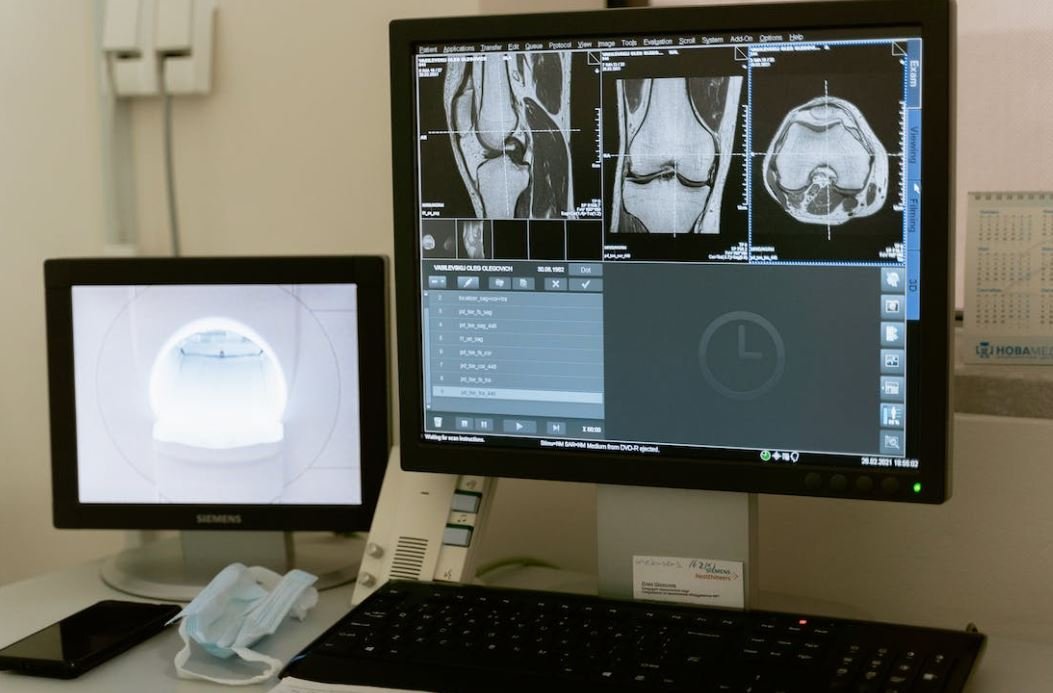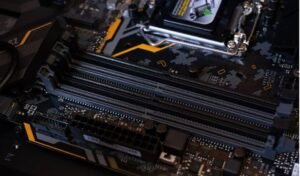Production Can Be Defined As
Production is a fundamental concept in the world of business and economics. It can be defined as the process of creating goods or services using the available resources and technology.
Key Takeaways:
- Production is the process of creating goods or services with available resources.
- It involves transforming inputs into outputs through various stages.
- Factors of production include land, labor, capital, and entrepreneurship.
**Production involves transforming inputs into outputs through various stages.** It starts with the identification of a need or demand, followed by the gathering and allocation of resources to meet that need. This process typically includes several stages, such as planning, sourcing, manufacturing, and distribution.
**Factors of production** are essential elements in the production process. These include:
- **Land**: The natural resources used in the production process, such as land, water, minerals, and energy sources.
- **Labor**: The human effort and skills required to produce goods or provide services.
- **Capital**: The physical and financial resources, such as machinery, equipment, and money, used in production.
- **Entrepreneurship**: The ability to organize and coordinate the other factors of production to create a successful business venture.
| Stage | Description |
|---|---|
| Planning | Develop strategies, set goals, and design production processes. |
| Sourcing | Acquire and manage the necessary resources, such as raw materials and components. |
| Manufacturing | Transform the inputs into finished goods through various manufacturing processes. |
| Distribution | Deliver the finished products to customers through appropriate channels. |
**Efficiency** is a key consideration in production. It involves maximizing output while minimizing input or resource usage. This can be achieved through process optimization, technology adoption, and effective resource management.
For businesses, efficient production leads to reduced costs, increased profitability, and a competitive advantage in the market. *Optimizing production processes can lead to significant savings and improved customer satisfaction.*
| Method | Advantages | Disadvantages |
|---|---|---|
| Mass Production | High volume, low cost per unit. | Limited customization, increased setup time. |
| Batch Production | Flexibility, reduced setup time. | Higher cost per unit, longer production time than mass production. |
| Custom Production | High level of customization. | High cost per unit, longer production time. |
**Automation** plays a significant role in modern production processes. It involves the use of technology and machinery to perform tasks that were previously done by humans. By automating repetitive and labor-intensive tasks, businesses can improve efficiency, precision, and consistency in production.
It is important for businesses to continually monitor and evaluate their production processes. *Regular analysis can identify areas for improvement, opportunities for cost reduction, and potential bottlenecks.* Implementing changes and adopting innovations can help businesses stay competitive and adapt to changing market conditions.
Summary
Production is the process of creating goods or services using available resources. It involves transforming inputs into outputs through various stages. Factors of production, such as land, labor, capital, and entrepreneurship, play crucial roles in the production process. Efficiency, automation, and continuous improvement are key considerations for businesses aiming to optimize their production operations.

Common Misconceptions
Production Can Be Defined As
There are several common misconceptions people have about the definition of production. Let’s take a closer look at some of them:
Misconception 1: Production Only Refers to the Manufacturing Process
Many people mistakenly believe that production only encompasses the manufacturing process. However, production encompasses much more than that. It involves not only manufacturing but also the planning, coordination, and control of resources to create goods or services. It includes activities such as procurement, transportation, storage, and distribution, among others.
- Production involves various stages, including planning, sourcing, processing, and delivery.
- It encompasses both tangible goods and intangible services.
- Production extends beyond the manufacturing industry and applies to other sectors like agriculture, construction, and healthcare.
Misconception 2: Production is a Linear Process
Another common misconception is that production is a linear process, where each stage follows the other in a straight line. However, production processes are often intricate and interconnected, involving feedback loops, iterative cycles, and multiple decision points. The production process is dynamic and ever-evolving.
- Production processes often consist of loops and iterations to optimize efficiency and quality.
- The production process can be influenced by external factors, such as market demand and technological advancements.
- Adaptability and flexibility are essential in production to respond to changing customer demands and improve competitiveness.
Misconception 3: Production is solely about Quantity
Many people mistakenly think that production is solely about quantity, focusing solely on producing more goods or services. While quantity is undoubtedly an important aspect, production also emphasizes the quality of the output. Achieving customer satisfaction, meeting industry standards, and ensuring the reliability of goods or services are essential in the production process.
- Quality control measures are integral to ensure products meet customers’ expectations.
- Producing a large quantity of goods does not necessarily imply high-quality production.
- Efficiency and effectiveness are key factors in achieving both quantity and quality in production.
Misconception 4: Production is an Independent Function
Another common misconception is that production operates in isolation from other functions of an organization. However, production is closely intertwined with various other functions, such as marketing, finance, and human resources. Collaboration and coordination across departments are necessary for successful production.
- Effective production requires coordination with marketing to understand market demands and trends.
- Financial considerations, such as budgeting and cost control, play a significant role in production decision-making.
- Human resources management is critical in ensuring skilled labor is available to support production processes.
Misconception 5: Production is Static
Lastly, some may mistakenly perceive production as a static concept that remains unchanged over time. However, production methods, technologies, and best practices are continuously evolving. Advancements in automation, machine learning, and sustainable production practices are reshaping the production landscape.
- Rapid technological advancements have led to increased automation in production processes.
- Continuous improvement initiatives, such as Lean and Six Sigma, drive efficiency and innovation in production.
- Sustainability and environmental considerations are increasingly integrated into modern production practices.

Production Can Be Defined As
Production is the process of creating goods or services to meet the demands of consumers. It involves transforming inputs, such as raw materials and labor, into outputs that can be sold or consumed. The efficiency and effectiveness of production directly impact the success of businesses. In this article, we will explore various aspects of production that shed light on its key components and its significance in modern economies.
The Global Automobile Production
The automotive industry plays a crucial role in the global economy, representing a significant portion of manufacturing output worldwide. The table below displays the production of vehicles by the top automobile-producing countries in 2020.
| Country | Number of Vehicles Produced (2020) |
|---|---|
| China | 25,216,535 |
| United States | 8,864,600 |
| Japan | 7,863,900 |
| Germany | 3,704,600 |
| India | 3,439,209 |
Global Oil Production by Country
Oil production is another vital sector that significantly impacts economies worldwide. The table below showcases the top oil-producing countries, along with their respective production levels in barrels per day (bpd) as of 2021.
| Country | Oil Production (bpd, 2021) |
|---|---|
| United States | 11,242,000 |
| Russia | 10,560,000 |
| Saudi Arabia | 9,890,000 |
| Canada | 5,303,000 |
| China | 4,892,000 |
Top 5 Corn-Producing Countries
Corn is a staple crop and a vital source of food and feed globally. Here are the leading corn-producing countries according to the average annual production in million metric tons (MMT) from 2016 to 2020.
| Country | Average Annual Corn Production (MMT, 2016-2020) |
|---|---|
| United States | 353.2 |
| China | 260.1 |
| Brazil | 100.0 |
| Argentina | 48.9 |
| Ukraine | 39.8 |
Global Renewable Energy Sources
Renewable energy plays a vital role in reducing carbon emissions and combating climate change. The table below presents the percentage of global electricity generation derived from renewable sources in 2020.
| Renewable Energy Source | Percentage of Global Electricity Generation (2020) |
|---|---|
| Hydropower | 16.4% |
| Wind power | 5.4% |
| Solar power | 3.8% |
| Biomass | 1.6% |
| Geothermal | 0.6% |
Top 5 Smartphone Manufacturers
The smartphone industry has revolutionized communication and technology. Here are the leading smartphone manufacturers by market share as of the second quarter of 2021.
| Manufacturer | Market Share (Q2 2021) |
|---|---|
| Samsung | 19.6% |
| Apple | 15.7% |
| Xiaomi | 14.9% |
| Oppo | 10.2% |
| Vivo | 9.1% |
Global Meat Production
Meat production is a significant contributor to the agriculture sector. The following table displays the top countries in terms of meat production in metric tons as of 2021.
| Country | Meat Production (metric tons, 2021) |
|---|---|
| China | 85,916,442 |
| United States | 38,898,800 |
| Brazil | 26,876,301 |
| Russia | 10,682,470 |
| India | 9,447,645 |
Global GDP by Country
Gross Domestic Product (GDP) serves as an essential indicator of a country’s economic performance. The table below ranks the top economies based on GDP in current US dollars in 2021.
| Country | GDP (Current US$) |
|---|---|
| United States | $22,675,271,000,000 |
| China | $17,669,342,000,000 |
| Japan | $6,200,246,000,000 |
| Germany | $4,322,649,000,000 |
| India | $3,417,651,000,000 |
Global Renewable Water Resources
Water scarcity is a growing concern globally. The table below displays the countries with the highest total renewable water resources, expressed in cubic kilometers per year, as of the most recent data available.
| Country | Total Renewable Water Resources (cubic km/yr) |
|---|---|
| China | 2,802 |
| Brazil | 8,233 |
| Canada | 2,902 |
| Indonesia | 2,525 |
| Russia | 4,508 |
Global Electricity Consumption
Electricity consumption reflects the level of development and energy demand in a country. The table below ranks the top electricity-consuming countries in terawatt-hours (TWh) as of the latest available data.
| Country | Electricity Consumption (TWh) |
|---|---|
| China | 7,813 |
| United States | 3,989 |
| India | 1,681 |
| Russia | 1,153 |
| Japan | 936 |
Production is a fundamental pillar of the economy, encompassing diverse sectors and industries. The tables presented here shed light on the global production and consumption trends, revealing the dynamic and interconnected nature of our modern world. Whether it is the production of vehicles, oil, corn, or electricity, these numbers shape our lives and offer insights into economic development, sustainability, and resource management.
Frequently Asked Questions
What is production?
Production refers to the process of manufacturing or creating goods and services through various activities such as planning, designing, sourcing raw materials, manufacturing, assembling, and delivering the final products to customers.
What are the key components of production?
The key components of production include inputs (raw materials, labor, machinery), processes (manufacturing and assembly), outputs (finished goods), and logistics (supply chain management, distribution).
Why is production important?
Production is important because it enables the creation of goods and services that meet the needs and desires of consumers. It drives economic growth, generates employment opportunities, and contributes to the overall development of industries and economies.
What are the different types of production?
There are several types of production, including manufacturing production (making physical goods), service production (delivering intangible services), process production (continuous production of goods), and job production (customized or unique products).
What is the production process?
The production process consists of a series of steps that transform inputs into outputs. It typically includes activities such as planning, sourcing, design, manufacturing, quality control, and distribution.
What is production planning?
Production planning involves creating a detailed plan that outlines the necessary resources, processes, and timelines to meet production goals efficiently. It helps in coordinating activities, optimizing resources, and ensuring smooth production operations.
What is the role of technology in production?
Technology plays a vital role in production by enhancing efficiency, productivity, and quality. It enables automation of processes, improves data analysis for decision-making, facilitates communication and collaboration, and enables the use of advanced machinery and equipment.
How can production be optimized?
Production can be optimized through various strategies such as implementing lean manufacturing techniques, streamlining workflows, investing in advanced technologies, conducting regular performance analysis, optimizing supply chain logistics, and continuously improving processes.
What is the difference between production and manufacturing?
While production encompasses the entire process of creating goods and services, manufacturing specifically refers to the physical transformation of materials or components into finished goods through various industrial processes.
What are some challenges in production management?
Challenges in production management include managing costs, ensuring product quality and consistency, meeting production deadlines, optimizing resource allocation, managing supply chain disruptions, adapting to market demand fluctuations, and fostering effective communication and collaboration within production teams.




